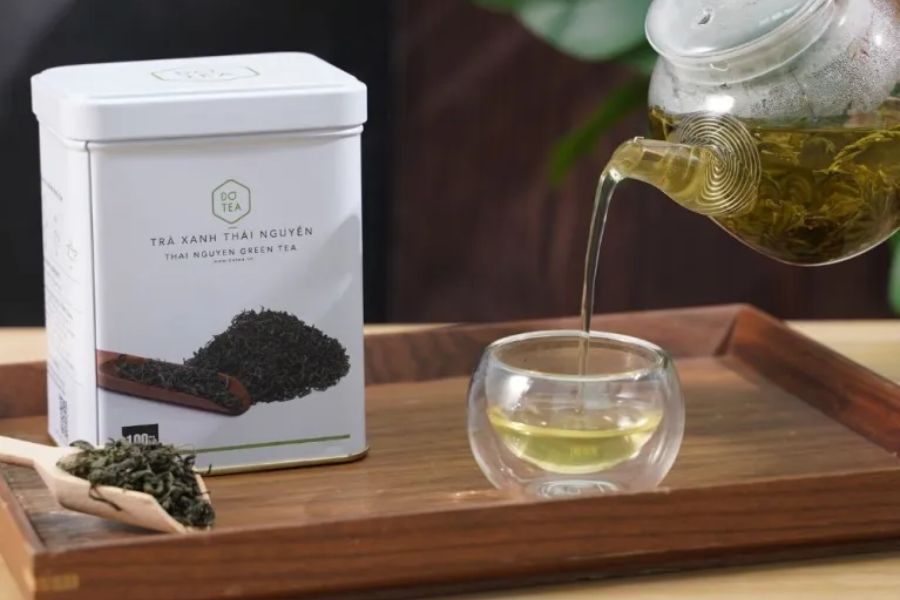- Mar 7, 2024
Green Artichokes vs. Red Artichokes: Unveiling the Contrasts!
Green and red artichokes often confuse many people. So, how are green and red artichokes different? These two foods provide distinct nutritional values, benefits, and flavors. Let's explore the differences between green and red artichokes with Chus!
Origin of Green and Red Artichokes
Green artichoke, known as artichoke in English, is a plant belonging to the Asteraceae family, originating from the Mediterranean region. It is the result of domestication from wild cardoons and has become an essential part of the culinary culture, especially in the ancient Greek and Roman cuisines, later spreading to many countries, including Vietnam. In Vietnam, green artichokes are grown in cold climates like Da Lat and Sapa.
Red artichoke (Hibiscus sabdariffa), known as roselle in English, is more commonly referred to as roselle or hibiscus. This plant belongs to the Malvaceae family and has its origins in Africa. Various parts of the plant, such as the calyx, leaves, and flowers, are utilized in culinary and medicinal applications. Red artichokes, or roselle, are grown in Vietnam and various other parts of the world. In Vietnam, red artichokes (roselle) can be found in some northern provinces like Hai Duong and Hung Yen.
How Are Green and Red Artichokes Different?
Color and Appearance
Green artichokes are characterized by large, thistle-like buds, green in color and may have a hint of purple at the tips, resembling closed leaves. When cooked, green artichokes release a yellowish-brown liquid, a characteristic color of herbal teas.
Red artichokes (roselle) stand out with a deep red color in the calyx. The calyx is a commonly used part to make the famous hibiscus tea, resulting in a naturally beautiful red hue.
Uses and Applications
Green Artichoke
In culinary and herbal medicine, the edible part of the artichoke is utilized, mainly the flower buds and leaves. Green artichokes can be used to make cooling soups, artichoke tea, or extracted into artichoke extract.
Green artichokes are rich in antioxidants, providing protection against free radicals and oxidative stress, which are natural causes of aging in humans and other health issues.
Some health benefits of green artichoke tea and extract include:
- Cooling and detoxifying the liver.
- Supporting cholesterol reduction and reducing the risk of heart diseases.
- Assisting in lowering blood pressure, suitable for those with high blood pressure; balancing blood sugar levels.
Green artichoke tea has a naturally sweet taste with a slight bitterness. When diluted into tea, artichoke extract has less sweetness, leaning towards an herbal taste. You can add sugar or honey to make artichoke tea more palatable.
Who Should Use Artichoke?
With significant medicinal properties and health benefits, artichokes are suitable for individuals with heat-related liver issues, high cholesterol, and high blood pressure. Artichokes can be consumed in various forms, such as fresh flowers for soup, artichoke tea from flowers and leaves, dried roots, or artichoke extract.
If you wonder whether consuming a lot of artichoke is good, it depends on your health. Green artichokes can be beneficial when consumed in the right amount. However, overconsumption can lead to adverse effects, potentially overworking the kidneys and liver.
Therefore, when drinking artichoke tea or artichoke extract, avoid excessive intake. Read the usage instructions carefully to avoid exceeding the recommended dosage. Especially, consult with a doctor to ensure artichoke is suitable for your health condition and medication regimen.
Who Should Avoid Artichoke?
Due to its potent nature and limited research, pregnant and breastfeeding women and children under 3 should avoid using artichoke.
People with kidney stones should avoid artichoke due to its high oxalate content.
As artichoke belongs to the Asteraceae family, those with allergies to chamomile tea should also avoid artichoke.
The side effects of artichoke include diarrhea and abdominal cramps, making it unsuitable for those with cold constitutions or sensitive stomachs.
Red Artichoke (also known as Roselle, Hibiscus)
Red Artichoke, also known as roselle or hibiscus, offers a diverse range of uses in many countries around the world. In places like Malaysia and India, the leaves of the roselle plant are used as greens for soups or other dishes. In many regions, including Vietnam, the calyx of the roselle flower is primarily used to make preserves, syrups, or to infuse into roselle flower tea.
The roselle flower is rich in antioxidants such as polyphenols, vitamin C, and beta-carotene (a precursor to vitamin A). These components effectively combat free radicals, helping to prevent diseases such as cancer, heart disease, and diabetes.
Benefits of Drinking Hibiscus Tea:
- Supports cancer prevention.
- Aids in weight loss by reducing appetite and fat accumulation.
- Reduces fat in the liver and protects the liver.
Red artichoke tea (hibiscus flower tea) is an herbal tea with a delightful, slightly tart flavor that many people enjoy. You can brew roselle tea with sugar, honey, banana nectar, coconut nectar, etc., to enhance its sweetness and taste.
Who Should Drink Hibiscus Tea?
With its mild and tangy taste, roselle tea is believed to stimulate digestion and discourage fat accumulation. Additionally, it helps reduce the sensation of hunger. Therefore, this reddish herbal tea may assist individuals in maintaining or losing weight.
Those seeking a delicious, natural herbal tea with health benefits should not overlook red artichoke tea due to its pleasant taste. Moreover, the tea's visually appealing color adds to the enjoyment of drinking it.
Women aiming for radiant skin should consider drinking red artichoke tea, thanks to its richness in vitamin C, precursor to vitamin A, and its ability to stimulate collagen production. This promotes prolonged youthfulness and increased skin elasticity.
Who Should Avoid Hibiscus Tea?
Individuals experiencing hormonal imbalances should refrain from drinking red artichoke tea due to its potential hormonal effects.
People with kidney stones should avoid red artichoke and herbal teas in general, unless approved by a doctor.
Pregnant and breastfeeding women should consult with an expert before consuming red hibiscus or any other herbal tea.
Avoid drinking hibiscus tea a few days before undergoing surgery or minor procedures.
In Conclusion:
With this article, Chus hopes that you can distinguish between green and red artichokes. Additionally, choose the tea that best suits your taste and health preferences. At Chus, there is a variety of delicious teas and herbal infusions, carefully selected from the clean, green regions of Vietnam. Let's enjoy some delightful tea together!
References: Healthline, Pharmeasy











